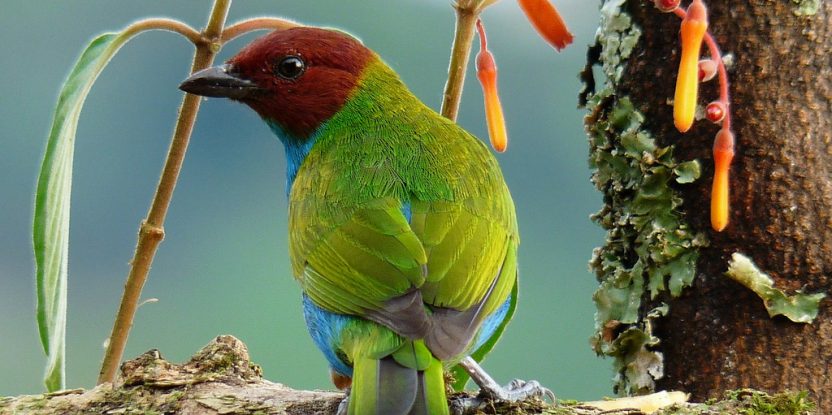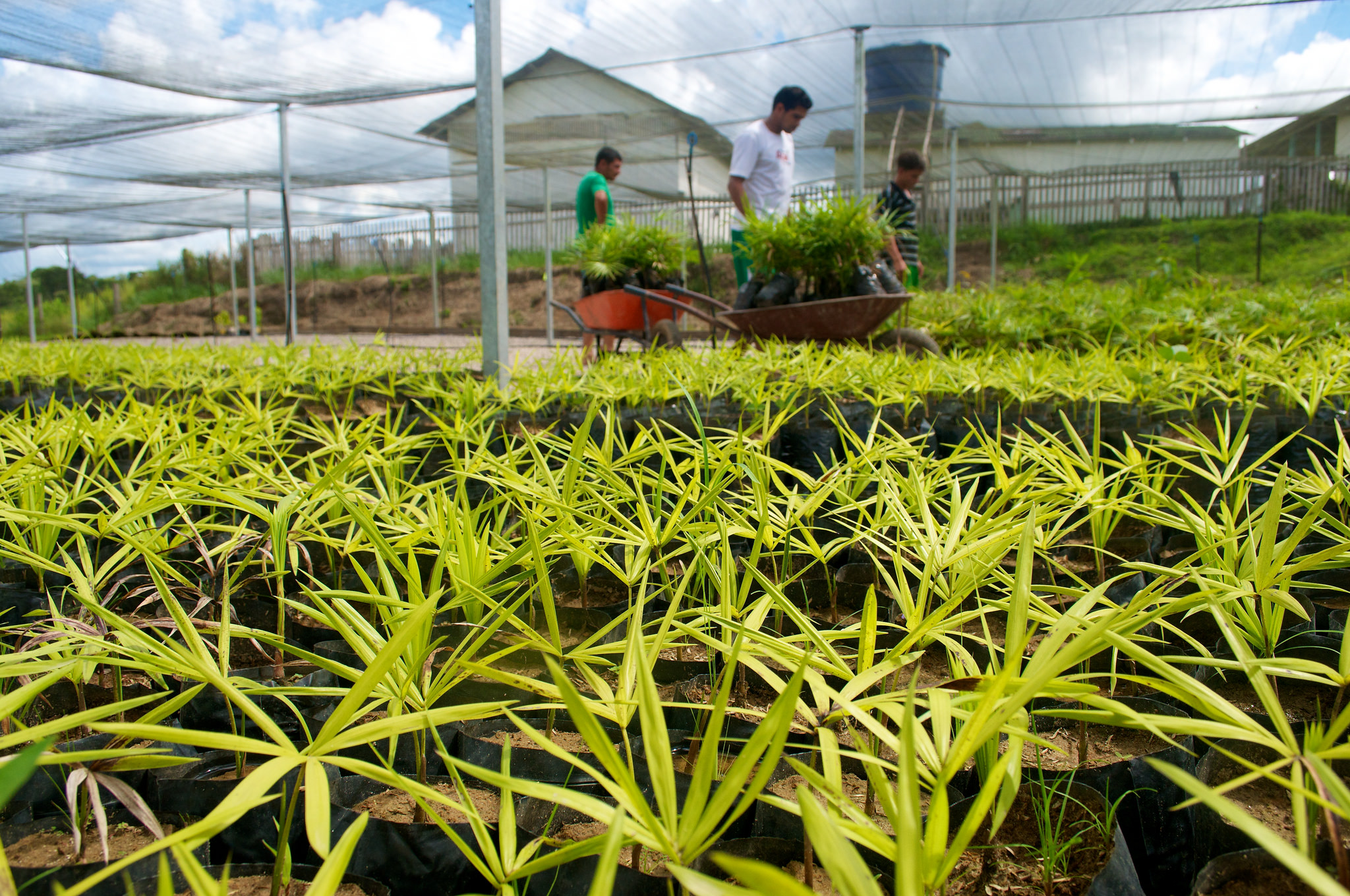
When a company builds a mine, dam, highway or other infrastructure, how can it compensate for, or ‘offset’, the loss of biodiversity resulting from the project?
One way is by investing in the conservation of an ecologically equivalent area that is at least as large as the area affected by the project. Another is ecological restoration, which involves recovering an ecosystem with characteristics similar to those of the affected area, so there is no net loss of biodiversity — and ideally, there could be a net gain, known as a ‘net positive impact’.
Colombia has developed guidelines for offsetting biodiversity loss through ecological restoration. But gaps in the system raise questions about whether the restoration projects will be effective in the long term, according to a new study by the Center for International Forestry Research (CIFOR).
Addressing conceptual shortcomings and clarifying rules would not only improve Colombia’s system for biodiversity offsets but could serve as an example for other countries, says Carolina Murcia of the Pontifical Javeriana University in Cali, a co-author of the report.
“Colombia is one of the first Latin American countries to implement an offset system, and in doing so it is setting a precedent,” Murcia says. “We’re still learning, but despite the problems that have been identified, it is commendable that Colombia is making progress towards an offset program that is based on an explicit protocol.”
Those binding guidelines apply to biodiversity offsets for large-scale mining, oil and gas, energy, highway, railroad, maritime, and seaport or airport projects.
“But the legislation has a series of critical loopholes that leave the door open to biodiversity loss,” Murcia says.
This topic will be discussed at at a session titled Building Capacities for the Restoration of Tropical Forest Landscapes and the Enhancement of their Ecosystem Goods and Services on 20 December at the Global Landscapes Forum in Bonn, Germany.
GUIDELINES NEED MORE CLARITY
Current norms allow for several different kinds of restorative actions, such as restoration, rehabilitation and reclamation, but do not take into account that those different actions could have different outcomes, she says.
In addition, it can take decades for ecological restoration to produce the desired results. That means that when ecological restoration is used to offset an infrastructure project, there is no guarantee of continued protection and stewardship of the site beyond the lifespan of the development project.
Companies can choose between conservation or restoration of an ecosystem ‘equivalent’ to the one affected. But the current norms are not clear about what constitutes an ‘equivalent’ ecosystem, and the coarse resolution of satellite images commonly used for decision-making can make site identification even more complicated, Murcia says.
The guidelines also leave open the possibility of engaging in agroforestry or other productive activities, which are not ecosystem restoration activities in a strict sense, she adds.
Sometimes the offset is on public land, but when the area to be restored is on private property, additional questions arise. The company seeking the offset signs a contract with the landowner, but there is no way to guarantee that the property owner — or future owners — will honor the contract for the decades needed for restorative processes to be completed and to persist, or that the restored land will not be degraded in the future, wiping out the gain.
Despite the uncertainties, business representatives who were consulted during the study expressed interest in offsetting biodiversity loss through ecological restoration, but said their companies lacked the technical capability to implement large-scale restoration projects.
That interest, along with the researchers’ other findings, point to the need for clearer, more consistent guidelines for biodiversity offsets. Colombia’s guidelines for biodiversity offsetting are currently being reviewed by representatives of non-profit organizations, government agencies, academics and the private sector for future revision, Murcia says.
The revised version should clarify how ‘equivalent’ ecosystems are identified and address the challenges of implementing long-term monitoring of restored ecosystems, Murcia says.
STUDY POINTS TO LESSONS, QUESTIONS
“There are lessons in this for other countries, as well,” she adds. “Any law or regulation or decree related to offsets must be well-supported by knowledge of the country’s ecology, as well as good planning tools, with appropriate scales and high-quality data.”
The CIFOR study underscores the need for service providers with the knowledge and skills necessary to do high-quality ecological restoration. Guidelines can include the requirement that the work by done by certified professionals, Murcia says.
The study also proposes many questions for further research. One key issue is how to determine what constitutes an “equivalent” ecosystem for restoration projects in the context of biodiversity offsets.
“Tropical ecosystems are varied and their composition changes over space and time,” Murcia says. Because that can create discrepancies in species composition, “one question that needs to be resolved is what percentage of discrepancy is acceptable when determining whether two sites are ecological equivalents, or will become equivalents after one of them is restored.”
Further study is also needed to identify conservation mechanisms that can help guarantee that restored areas on private, or public, lands remain so over the long term, as well as cost-benefit comparisons of offsetting through ecosystem conservation and ecosystem restoration, Murcia says.
“Our work offers insights for guiding countries towards implementing land degradation neutrality initiatives and zero deforestation commitments promoted by intergovernmental organizations, the private sector and civil society at large,” says Manuel Guariguata, CIFOR’s theme leader on forest management and restoration and one of the co-authors of the study.
“In particular, Colombia’s experience so far lays the groundwork for both future studies and a stronger offset system that could serve as an example in neighboring countries,” he says.
We want you to share Forests News content, which is licensed under Creative Commons Attribution-NonCommercial-ShareAlike 4.0 International (CC BY-NC-SA 4.0). This means you are free to redistribute our material for non-commercial purposes. All we ask is that you give Forests News appropriate credit and link to the original Forests News content, indicate if changes were made, and distribute your contributions under the same Creative Commons license. You must notify Forests News if you repost, reprint or reuse our materials by contacting forestsnews@cifor-icraf.org.

